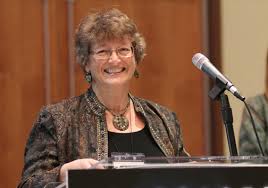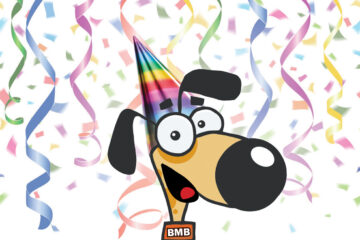Jerusalem ascending

Turning to Spirituality Series
Jewish Family Education with Candace R. Kwiatek, The Dayton Jewish Observer
Jerusalem. A city holy to three religions. A nerve center of biblical archaeology. A focal point for prayer. A flashpoint in Middle East peace negotiations. A destination for pilgrimage. A microcosm of Israel’s history. A subject of recent news reporting.
Each of these epithets captures an aspect of the city, but none fully explains why Jerusalem has been at the very core of Judaism for more than 3,000 years.
A singular figure in history provides much of the answer. When he came to power, King David sought a central location in which to establish his rule, choosing the well-fortified Jebusite city of Jerusalem.
Not wanting to acquire Jerusalem by conquest alone, David purchased the city from the Jebusites “for the Jewish people as an everlasting possession with an irrevocable deed” according to Midrash.
David made Jerusalem his capital city, setting up a military command, legal courts, and government offices, thereby unifying the disparate tribes into a united monarchy.
He then brought the Holy Ark up to Jerusalem, establishing the city as a spiritual center as well. Under King David, Jerusalem became a symbol of Jewish national identity, self-rule, and spirituality.
Next, David set out to build a permanent Temple in fulfillment of God’s command and “to reinforce Jerusalem’s role as the center of the Jewish people and the land of Israel,” writes Abraham Stahl in Jerusalem Through the Windows of Time, “but (as a man of war, David) didn’t receive God’s blessing.”
So instead, David prepared for construction by purchasing a threshing floor from Aravnah the Jebusite and designing the Temple Mount there.

According to Midrash, David was divinely inspired to position the Holy of Holies in the exact spot where Abraham bound Isaac, where Noah offered his post-flood sacrifice, and where God initiated Creation and then gathered dust to form humans: a venerable spot indeed.
Built by David’s son King Solomon, the First Temple quickly became the focal point of Jewish life.
Jerusalem was viewed as the center of the world, and the Temple was the center of Jerusalem, where heaven and earth meet and where God came to dwell among the people.
It was the site where people reached out to God through sacrifice and prayer. It was the archive for the Jews’ most valued possession: the Tablets of the Law. It was the destination of festival pilgrimages and celebrations. It will be the site of the Messiah’s arrival. The destruction of Jerusalem and its Temple by the Babylonians and again by the Romans left a huge void in Jewish spiritual life and ignited an immense yearning to this very day. “How shall we sing the Lord’s song in a foreign land? If I forget thee, O Jerusalem, let my right hand wither…(Psalm 137).”
Jerusalem remains central to Jewish identity even today. The language of prayer — including many psalms of David — regularly recall Jerusalem and Zion.
Like many other prayers, Birkat Hamazon (grace after meals) actually calls for a rebuilding of the holy city, a longing reflected in the concluding words of Israel’s national anthem, Hatikvah (The Hope): “The hope of 2,000 years: To live as a free people in our own land, the land of Zion and Jerusalem.”
The Birkat also includes one of 15 Songs of Ascents, traditionally sung by pilgrims on the uphill road to Jerusalem and on the steps to the Temple. And of course there’s the familiar ending to the Passover Seder, “Next year in Jerusalem!”
Through synagogue design as well, Jews have maintained their connection to the Holy City. Sanctuaries are constructed with the Holy Ark on the wall closest to Jerusalem, indicating the direction to face in prayer.
A mizrach, a decorative panel that serves the same function, is often found in synagogues as well as Jewish homes and public buildings. The synagogue bima (stage) and ner tamid (eternal light) are reminiscent of the Holy Temple’s design. Likewise, Torah coverings mimic the finery of the Temple High Priest.
Jewish texts also keep the memory of Jerusalem alive. One of the two great compendia of Jewish law and lore is called Talmud Yerushalmi, the Jerusalem Talmud, even though it was composed throughout Israel.
Like its Babylonian counterpart, the Jerusalem Talmud includes countless discussions, stories, and laws about Jerusalem.
According to the Shulchan Aruch, a separate code of Jewish law, all Jewish buildings are to leave a small area of unpainted wall in memory of the Temple’s destruction. For the same reason, when a man marries, he is to smear a bit of ash on his forehead and break a glass under the chupah (bridal canopy).
Myriad traditions reflect the perpetual centrality of Jerusalem in Jewish life. The calendar acknowledges Jerusalem twice: on Tisha b’Av, culminating the remembrance season of the Temple’s destruction, and on Jerusalem Reunification Day, celebrating the liberation of the Old City.
Across the centuries, Jews throughout Israel and the Diaspora have chosen to be buried in Jerusalem, now in record numbers.
Even technology has advanced the Jerusalem mystique. People can now watch the Temple’s Western Wall anytime by telecam and even put a note in the Wall via email.
Jerusalem. A symbol of Jewish national identity. The spot where heaven and earth meet. The site of the Messiah’s arrival. A connection to the past and a hope for the future. Above all, it is a living reminder of God’s presence in the world and the potential for ascending ever heavenward.
Literature to share
We Were the Lucky Ones by Georgia Hunter. Inspired by the wartime recollections of her grandfather, a Polish Holocaust survivor, Georgia Hunter set out to record the tales of other far-flung family members. She discovered incredible stories of grit, tenacity, and hope as each of them tried to find a path to safety from the horrors overtaking Europe. Hunter wove those stories together with extensive research to create a most extraordinary novel of survival. This is a must-read.
The Passover Cowboy by Barbara Diamond Goldin. Jacob’s family has moved from Russia to Argentina, and everything is different. Could he invite his new friend to Seder? Could Passover feel like home even with cowboys and horses? From an award-winning storyteller, this historically based fictional tale brings both history and holiday to life for the early elementary set.
To read the complete March 2018 Dayton Jewish Observer, click here.





